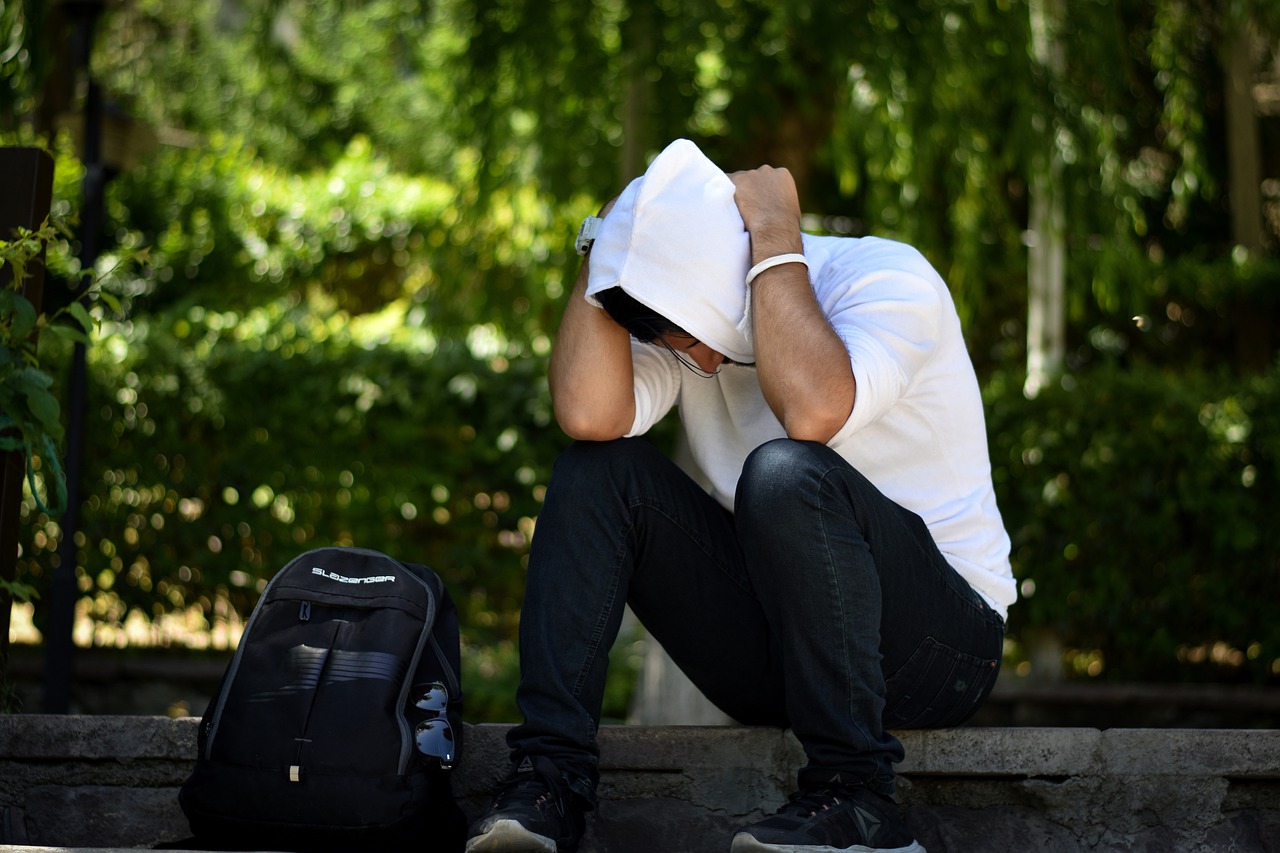
Awareness is up. New remedies are in the works. But the stats related to the opioid epidemic are still staggering.
- Opioids were involved in nearly 50,000 overdose deaths in 2019.
- In 2019, 7 million people misused prescription pain relievers.
- In 2020, U.S. doctors wrote more than 142 million opioid prescriptions. (In some counties, they wrote enough prescriptions for every single person to have one.)
It’s a vicious cycle. Opioids are overprescribed. People take them for chronic pain. They build a tolerance. And far too many ultimately end up addicted to the drugs.
Stop the Cycle of Opioid Addiction
How does this cycle end? Perhaps by finding new remedies for pain management. Remedies that aren’t addictive.
That’s exactly what researchers like Olivier Civelli hope to do.
Civelli is a professor of pharmaceutical sciences at the UCI School of Pharmacy and Pharmaceutical Sciences and is heading up research on the use of Corydalis yanhusuo.
Is Corydalis Yanhuso an Effective Medicine to Fight Opioid Addiction?
Corydalis yanhusuo is a traditional Chinese herbal medicine. The extract of this plant, YHS, has long been used in Asian countries for the treatment of various conditions, including pain.
 Western researchers are now looking to this herbal remedy for a potential solution to the opioid epidemic. And the results of their studies are promising.
Western researchers are now looking to this herbal remedy for a potential solution to the opioid epidemic. And the results of their studies are promising.
- It Relieves Pain
Researchers looked at the compound’s effectiveness at alleviating pain and found the herbal medicine to be effective. Because it appears to be nonaddictive, this could be a game changer for pain management. If doctors can prescribe a remedy that is both effective and nonaddictive, we could see a reduction in opioid prescriptions that may turn the tide on the opioid epidemic.
- It Reduces Addiction
Research also shows that the extract may prove helpful in reducing or preventing addiction. Civelli’s study looked at the addictive properties of morphine in mice. The research revealed that the plant extract can help curb these addictive properties. It blocks the development of morphine tolerance and dependence. Because morphine is an opioid, this suggests it would have similar results for other drugs in the opioid family, whether synthetic or natural. It might be possible to combine this extract with methadone treatments to make them more effective, or to provide the extract to patients who are on extended opioid treatments for pain. The results? The extract may help reverse current dependence and prevent future tolerance build-up that leads to new addictions.
Creating a Tool to Prevent Addiction and Overdoses
Civelli is hopeful that this research will lead to the creation of a tool that prevents addiction and overdoses. Of course, there is a long road ahead. His study was conducted on mice, and the extract will need to be tested in human trials to confirm it effectiveness. Civelli’s goal was to get the ball rolling. He wanted to establish a concept and produce results that would compel others to take the research further, to human trials.
Researchers note that the extract is currently readily available and has proven to be safe in other uses. This could help speed along the process and development of clinical trials.
Next Steps
Further research is needed. For Civelli, the next step is to look into the compound in more depth. What is it about the extract that makes it helpful to prevent addiction? How exactly does it prevent drug tolerance?
And, more research is necessary to learn more about opioids. “Why is it when people take an opioid that they need to take more and more to feel the effects?” Civelli asks.
If we can discover what is going on with the interaction between these drugs and the body, we can unlock the answer to a better way to treat pain. And that could be the secret to ending the opioid epidemic.
If you or someone you love is experiencing a substance use disorder, help is available. Call 800-934-1582(Sponsored) today.

Dave seems…different. He used to laugh easily, and he was always up for socializing. But lately, not so much. He seems moody and now he snaps at people over little things. And he’s less likely to accept invitations to get together. It’s like he’s withdrawing from me and everyone else. He’s also lost some weight. I’m not sure, but I think he’s hooked on prescription pain medication.
I started noticing changes in Dave not long after his knee injury, but that was nearly two years ago. He recently admitted that he’s still taking painkillers “just in case.” He said he’s afraid the pain might flare up again.
I want to help him, but I honestly don’t know how.
Prescription Pain Medication and Addiction
Do you have a Dave in your life? Maybe you’ve noticed signs of opioid addiction, but you’re not 100% sure what’s going on with your friend. You don’t want to sit on the sidelines while they ruin their life, but what are you supposed to do? How can you be the friend they need right now?
There’s only one place to start: talk to them.
It’s not a conversation anyone wants to have, but it needs to happen. Yes, it will be hard. Yes, it might be awkward. Yes, your friend may get mad. But avoiding or ignoring the issue will not help your friend.
The most loving thing to do is to face these challenges and talk to your friend about their possible addiction.
What Should You Say?
 This might be one of the toughest conversations you ever have. It’s normal to wonder how in the world you’re supposed to bring up the topic or what you’re supposed to tell your friend.
This might be one of the toughest conversations you ever have. It’s normal to wonder how in the world you’re supposed to bring up the topic or what you’re supposed to tell your friend.
Here are four ideas that can help your conversation:
- Take a loving approach: Always, always, always take a non-judgmental and caring approach. Yes, this is a confrontation of sorts, but don’t bring a confrontational tone to the conversation. The point isn’t to make your friend feel bad, but to help them. Make it clear that you are talking to them because you care about them.
- Use “I” statements: Try to keep the focus on how the addiction is affecting you and things you are noticing and feeling. (“I feel like we haven’t spent as much time together lately.” “I’ve been hurt lately by some of the things you’ve said.” “I’ve noticed these changes…”) When you use “I” instead of “you,” the conversation comes across as less accusatory.
- Focus on their health: Let your friend know you are concerned for their well-being. Express your worries about the effects the drug use is having on their health and life. You don’t want to come across as angry at them, just concerned about them.
- Talk about the impact: Center your talk around the effects of addiction rather than your friend’s actions. Help your friend see how addiction affects people and their loved ones. The point is to provide perspective. If they can gain a healthier perspective (without feeling judged or condemned) they are more likely to react better to your conversation.
Help Them Get Treatment for Opioid Addiction
After you bring up the topic, the next step is to point your friend in the right direction – toward help. Look through treatment options together. Ask them to bring up the potential addiction when speaking to their doctor. Help them find resources that provide the support they need.
It may also help to frame the situation as a time of transition (instead of simply calling it a change, or sobering up, or an intervention). Explain that you want to help them make a transition from dependency on prescription pain medication to making different life choices that are much healthier in the long run.
Helpful Resources
Support is available for your friend. If they are open to making changes (and remember, they have to want it), you can provide valuable resources to explore together.
- Outpatient treatment options will help your friend deal with an opioid addiction while remaining at home and work.
- Inpatient treatment is also available, and is often the most effective way for someone to conquer an addiction.
- Support groups are also key to helping your friend stay sober by providing ongoing encouragement and assistance.
And one more thing; let your friend know you’ll be there rooting for them every step of the way. Remind them they’re not alone. Believe it or not, having the encouragement of a solid support system can make all the difference in the world.
For information about treatment options for you or a loved one, call 800-934-1582(Sponsored) today.
Images Courtesy of Pixabay

From trained therapy dogs to spoiled lap dogs, there’s no doubt our canine pals are amazing. And without the strength and love of my dog, I never could have overcome opioid addiction.
Some dogs play vital roles in assisted therapies, while others are tasked with jobs like searching for drugs, tracking the scent of a missing person, or alerting parents of a child’s oncoming seizure. More often than not, however, dogs serve as (wo)man’s best friend – loving us unconditionally and without an ounce of reservation.
I owe my life – and my sobriety – to Barley, a now 15-year-old Beagle/Schnauzer mix who renewed my belief in love, loyalty, and our possibilities. One look at his fuzzy little face and I melt.
Inseparable Friends
Like most wonderful things in life, I found Barley by chance. It was literally a case of being in the right place at the right time. I was minding my own business when this scruffy little 5-week-old puppy came bounding up to me…and I instantly fell in love.
 I went door-to-door in search of anyone who might know his owner. When I finally tracked this person down, the poor living conditions shocked me. I clearly remember thinking, “No wonder Barley ran away from this place.”
I went door-to-door in search of anyone who might know his owner. When I finally tracked this person down, the poor living conditions shocked me. I clearly remember thinking, “No wonder Barley ran away from this place.”
I could feel tears welling up in my eyes and a quickly growing sense of anger stirring in my spirit. “I don’t care what it takes, there’s no way I’m leaving him here. I’m going to rescue this dog,” I said to myself.
In chatting with the “owner,” it was clear she didn’t care about this precious pup. She said I could “have the damn mutt” if I wanted him. Before she could get out another word, I scooped Barley up, quickly walked away, and never looked back.
Once we got in my car, Barley jumped over the console and into my lap. I looked down and told him, “We’re going home, okay?” He immediately turned his head to the side, stood up on his hind legs, and laid his face on my neck. He knew he was safe. He knew he’d been rescued.
I grew up around dogs my whole life, but Barley was special. He’s the first dog I owned as an adult and, since I lived on my own, I could keep him inside. This sweet rescue dog won my heart, and I never went anywhere without him. We were absolutely inseparable…at least until drugs took over my life.
Loving (and Neglecting) My Best Friend
Like many other people, I started taking prescription opioid painkillers to treat a legitimate injury. In just a few short months, I developed a severe dependency on Vicodin. I was in over my head and, deep down inside, I knew it.
When you’re addicted to opioids, the bulk of your time is spent feeding that addiction. Every day, without fail, my only goal was to avoid withdrawal symptoms. I neglected my family, my friends, my job, my health – and my dog.
I often left Barley with my brother for two and three days at a time. Before I started abusing opioids, I would have been beside myself if I hadn’t seen my best buddy for a whole day, much less two or three. When I wasn’t dropping Barley off with family members, I was sleeping, working, or out looking for more pills.
I’d drive around with my poor dog in the passenger seat, riding shotgun while I was on a mission to find more drugs. And on these Vicodin-fueled trips, Barley would sit to my right, his head proudly stuck out the window, ears flapping in the wind, and nose working overtime to process scents in the air. He was so happy and content to be with me. But I was too sick to see it and too lost in addiction to care.
What an absolute waste of precious time.
Breaking My Opioid Addiction
My addiction to opioid painkillers spanned the better part of two years. And then one day, quite out of the blue, I decided it was time to get sober. I found an outpatient addiction treatment program that offered the specific therapies I needed, called them up, and made my first appointment. It’s the best decision I ever made for myself.
 I took my recovery seriously and gave it everything I had to give. I understood that, if I didn’t break the shackles of my addiction, I’d never make it out alive. I honestly couldn’t bear the thought of relapsing.
I took my recovery seriously and gave it everything I had to give. I understood that, if I didn’t break the shackles of my addiction, I’d never make it out alive. I honestly couldn’t bear the thought of relapsing.
After a few months went by, my body was rid of the drugs and the withdrawal sickness. Physically I felt wonderful; mentally I was a mess. I just felt so lost and incredibly unsure of my place in the world.
No matter where I went, I was sure that everyone saw me and knew my dirty little secret. I was an addict in recovery, and I was scared out of my mind.
Why would anyone want to be my friend? How could I ever make up for all the pain I caused? Who would ever want to love someone like me?
And then the answer licked me in the face.
My dog, my Barley, never ever left my side. My precious dog loved me no matter what kind of disease I was fighting. Every day that I didn’t have the self-esteem or courage to show my face to the world, Barley could sense it. And he would bounce around, pawing and prodding me to take him outside. He’d take his wet nose and push me, quite literally, out of the bed.
Looking in his eyes, I knew exactly what he was trying to say:
“Look mom, I love you. I’m here for you. Now get your butt up, stop feeling sorry for yourself, and let’s go live this day to the fullest.”
Embracing Life After Opioid Addiction
Believe it or not, after a few weeks of simply walking my dog and being present in the moment, my whole demeanor changed. And the miracle is that, once I began to go outside, soak up the sunshine, and breathe in the fresh air, I wanted more out of life – more out of myself.
It no longer satisfied me to hide in the house and punish myself for the mistakes of my past. I still had the support of family and real friends. I stopped worrying about things that didn’t matter. I let go of the fear and chose to embrace every day.
For too many years, I walked around believing I rescued Barley. The truth is he rescued me as much as I rescued him.
I am alive and sober today, and I owe it all to my best friend. My Barley.
Images courtesy of Pixabay and Nikki Seay
